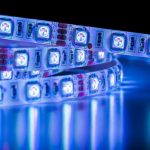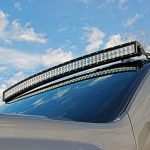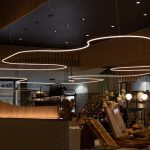Upgrade Your Lighting: How to Easily Convert a 2Ballast Light to LED
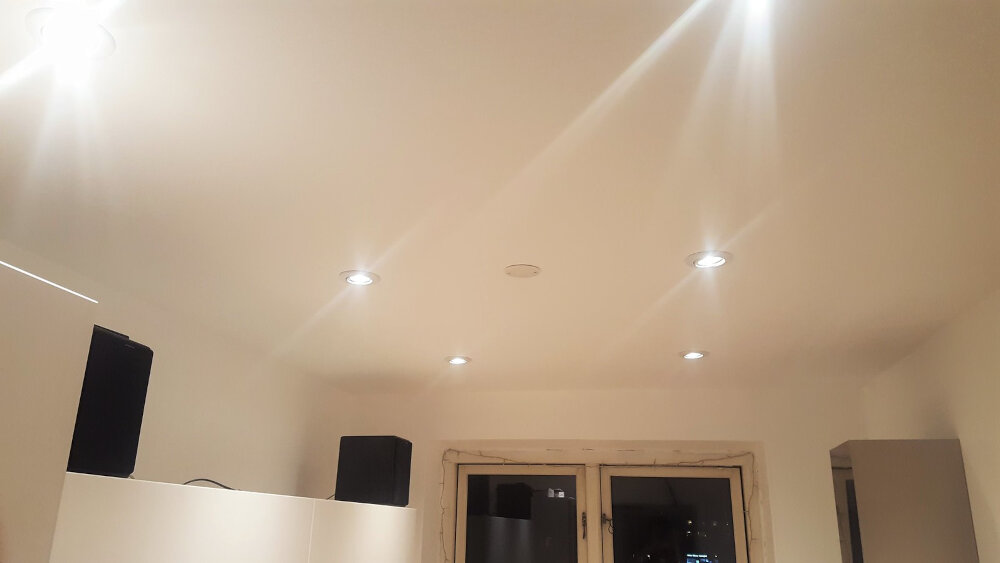
Lighting is an essential aspect of any building or space, whether it’s a home, office, or commercial establishment. It not only illuminates the area but also adds to the ambiance and aesthetics of the space. With the advancement of technology, traditional lighting systems are being replaced by energy-efficient LED lights. LED lights are not only eco-friendly but also provide better illumination and last longer than traditional lights. However, upgrading to LED lights can be a daunting task, especially if you have a 2-ballast light system. In this article, we will guide you through the process of converting your 2-ballast light to LED, making the upgrade process smooth and hassle-free. Converting a 2-ballast light to LED is an excellent way to save energy and money on your electricity bills. The process involves removing the existing ballasts and installing LED tubes or bulbs. LED tubes are an excellent option as they are easy to install, require minimal maintenance, and have a life span of up to 50,000 hours. Moreover, LED lights are available in different colors, shapes, and sizes, making it easy to find the perfect fit for your space. In this article, we will discuss the benefits of LED lights, the tools required for the conversion process, and a step-by-step guide on how to convert a 2-ballast light to LED.
LED lighting has become increasingly popular due to its numerous benefits. One of the main advantages is energy efficiency – LED lights use up to 80% less energy than traditional incandescent bulbs, saving both money and resources. They also have a longer lifespan, lasting up to 25 times longer than incandescent bulbs. Additionally, LED lights emit less heat, making them safer and more comfortable to be around. They are also more durable and resistant to damage from shock and vibration. Finally, LED lights are available in a variety of color temperatures and can be controlled through smart technology, making them a versatile and customizable lighting solution for any space.
2-ballast lights, commonly found in commercial and industrial settings, have been a popular lighting fixture for decades. However, these lights are quickly becoming obsolete due to their inefficiency and high energy costs. The problem with 2-ballast lights is that they require two separate ballasts to operate, which increases the likelihood of failures and malfunctions. Additionally, these ballasts are often difficult and expensive to replace, leading to maintenance issues and further costs. Upgrading to LED lighting offers a simple solution to this problem, reducing energy consumption and maintenance costs while increasing the longevity and reliability of the lighting fixture.
The article titled \Upgrade Your Lighting: How to Easily Convert a 2-Ballast Light to LED\ provides a comprehensive guide on how to upgrade your lighting system by converting a 2-ballast fluorescent light to an LED light. The article highlights the benefits of LED lighting systems, including energy efficiency, longer lifespan, and reduced maintenance costs. It also provides step-by-step instructions on how to safely and easily convert the fluorescent light to an LED light, including the necessary tools and materials. The article ends by summarizing the advantages of the LED lighting system and the potential cost savings that can be achieved through this upgrade.
What You’ll Need
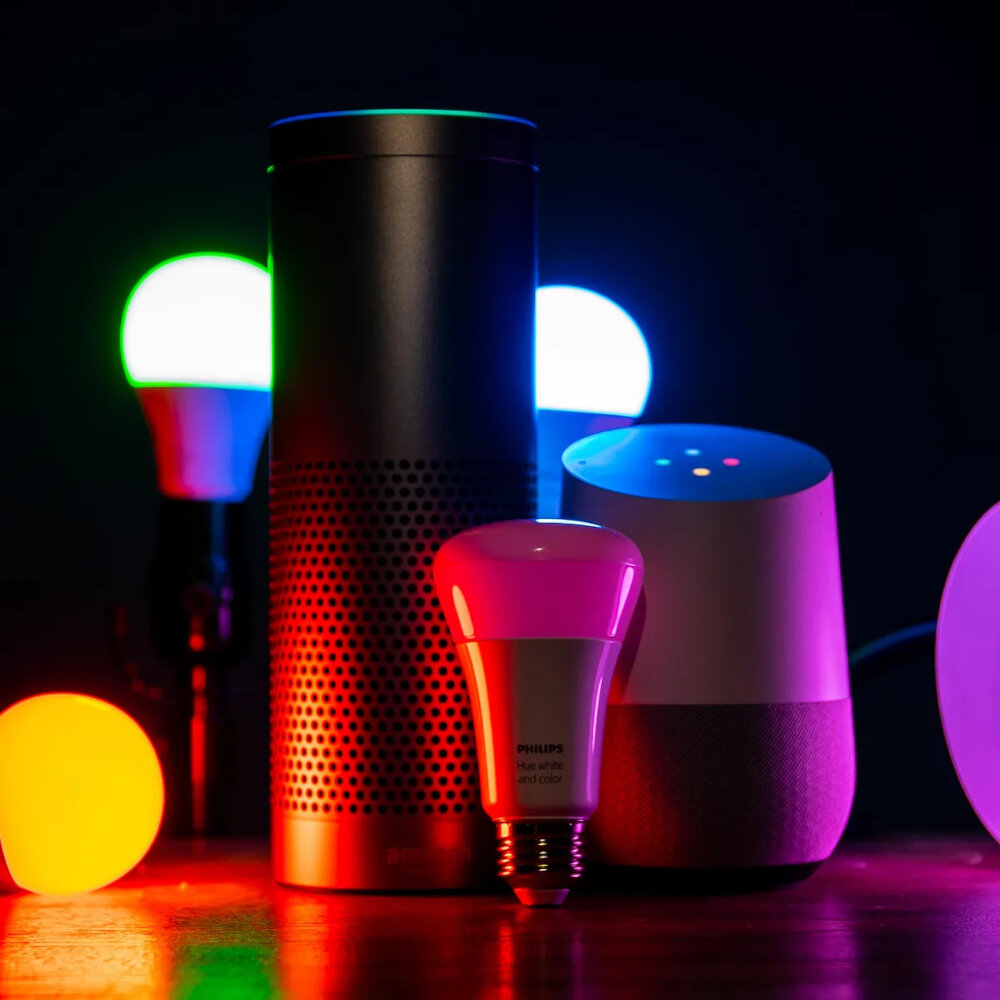
When it comes to upgrading your lighting and converting a 2-ballast light to LED, there are a few things you’ll need to get started. First and foremost, you’ll need to purchase the LED tubes themselves. These can be found at most hardware or home improvement stores and come in a variety of sizes and wattages to fit your specific needs. It’s important to make sure you purchase tubes that are compatible with your existing fixture, so read the packaging carefully before making your purchase. Additionally, you’ll need a few basic tools such as a screwdriver, wire cutters, and pliers to help you remove the old ballasts and install the new LED tubes. In addition to the LED tubes and tools, you may also want to consider purchasing a non-shunted socket if your current fixture is not already equipped with one. This socket is necessary for the LED tubes to function properly, so it’s important to make sure you have one before beginning the conversion process. You may also want to purchase some wire nuts to help secure the wiring connections once you’ve removed the old ballasts. With these essential items in hand, you’ll be well on your way to upgrading your lighting and enjoying the many benefits of LED technology.
To convert a 2-ballast light to LED, you will need several tools and materials. Firstly, you will need a voltage tester, wire strippers, and wire connectors to ensure a safe and secure connection. You will also need LED tubes that are compatible with your fixtures, and a ballast bypass kit to eliminate the need for the existing ballasts. Additionally, a ladder or step stool may be necessary to access the fixtures, and a pair of safety glasses is recommended to protect your eyes from any debris. By having these tools and materials on hand, you can successfully upgrade your lighting to energy-efficient LED technology and enjoy the benefits of improved lighting and reduced energy costs.
Upgrading your lighting to LED is not only energy-efficient but also cost-effective in the long run. In this article, we will explain why each item is necessary to convert a 2-ballast light to LED. Firstly, the LED bulbs themselves are necessary as they consume less energy and last longer than traditional bulbs. Secondly, the non-shunted sockets are required to connect the LEDs to the ballast. Thirdly, the LED driver is needed to regulate the voltage and current supplied to the LEDs. Fourthly, the wire nuts are necessary to connect the wiring for the LED driver and sockets. Lastly, the wire strippers and cutters are essential tools for cutting and stripping wires to the appropriate length. With all these items, converting your 2-ballast light to LED will be an easy and efficient process.
Steps to Convert
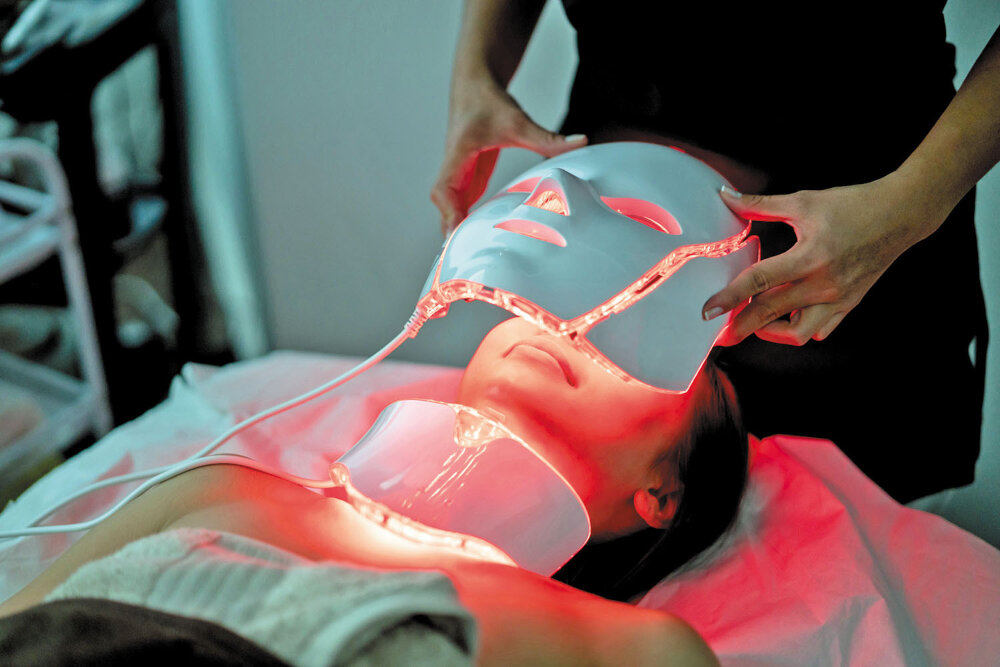
Upgrading your lighting to LED can not only save you money on your energy bill but also help the environment. Converting a 2-ballast light to LED may seem daunting, but it can be done easily with a few simple steps. The first step is to make sure you have the right tools for the job. You will need a screwdriver, wire stripper, wire nuts, LED bulbs, and a new LED driver. The next step is to turn off the power to the light fixture and remove the bulbs and ballasts. Take note of how the wiring is connected before disconnecting it. Once the wiring is disconnected, remove the ballasts and install the new LED driver. Connect the wires to the new driver and secure it in place. Finally, install the LED bulbs and turn the power back on to test the new lighting. With these simple steps, you can easily convert your 2-ballast light to LED and enjoy the benefits of energy-efficient lighting.
Upgrading your lighting can save you money on energy bills, as well as provide a brighter and more efficient workspace. Converting a 2-ballast light to LED is a simple process that can be done with just a few tools. First, turn off the power to the light fixture and remove the old ballasts. Next, connect the LED driver to the wiring and mount it in the fixture. Install the LED tubes into the sockets and turn the power back on. It’s important to note that the wiring may vary depending on the fixture, so it’s best to consult the manufacturer’s instructions or hire a professional electrician if you’re unsure. With a successful conversion, you’ll enjoy brighter and more energy-efficient lighting for years to come.
Clear and concise language is essential when it comes to providing instructions, especially when it involves technical steps. In the article \Upgrade Your Lighting: How to Easily Convert a 2-Ballast Light to LED,\ the author effectively uses simple and straightforward language to guide readers through the process of converting their traditional lighting fixtures to LED. In addition to the clarity of the language, the author also includes helpful visual aids such as diagrams and images to further enhance the reader’s understanding of the steps involved. This well-executed combination of clear language and visual aids not only makes the process easier to understand but also increases the likelihood of a successful conversion.
Tips and Considerations
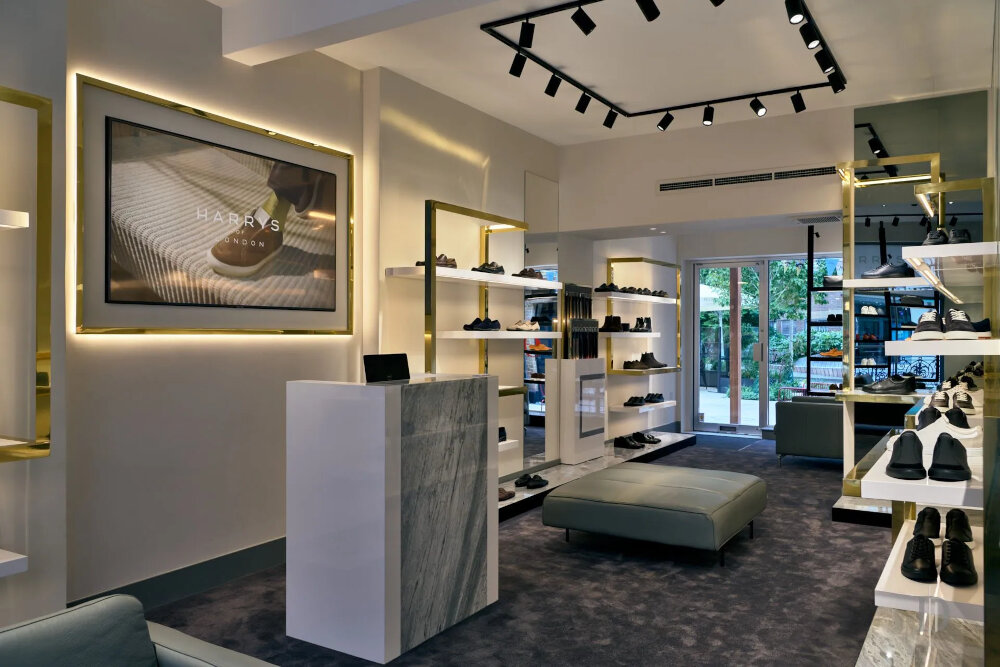
When upgrading your lighting system from fluorescent to LED, there are several tips and considerations that you should keep in mind. Firstly, ensure that you purchase LED tubes that are compatible with your existing fixture. While most LED tubes are designed to fit into standard fluorescent fixtures, there are some fixtures that may require special LED tubes. Additionally, you should consider the color temperature of the LED tubes that you choose, as this can have a significant impact on the overall feel and ambiance of the space. Warm white (2700K-3000K) LED tubes are ideal for creating a cozy and inviting atmosphere, while cool white (4000K-5000K) LED tubes are better suited for task lighting and workspaces. Another important consideration when upgrading your lighting system is the type of ballast that your existing fixture uses. If your fixture uses an electronic ballast, you can simply remove the old fluorescent tubes and replace them with LED tubes. However, if your fixture uses a magnetic ballast, you will need to remove the ballast and rewire the fixture before installing the LED tubes. This can be a more complex process, so it is important to carefully follow the manufacturer’s instructions or seek the assistance of a professional electrician. By taking these tips and considerations into account, you can easily and effectively upgrade your lighting system to LED, enjoying the many benefits of improved energy efficiency, longevity, and performance.
In addition to the steps outlined in the article, there are a few other things to keep in mind for a successful conversion to LED lighting. First, make sure to choose high-quality LED bulbs that are compatible with your fixture and ballasts. Cheaper bulbs may not last as long or provide the same level of brightness. Second, consider installing a dimmer switch to adjust the lighting level as needed, which can save energy and extend the life of your bulbs. Finally, be sure to follow all safety guidelines when working with electrical wiring, including turning off power to the fixture before making any changes. By taking these additional steps, you can ensure a smooth and successful transition to LED lighting.
When upgrading your lighting from traditional fluorescent bulbs to LED, there are several common mistakes that should be avoided. Firstly, it is important to ensure that the LED bulbs are compatible with your existing ballast, or to remove the ballast altogether and directly wire the LEDs. Additionally, it is crucial to properly measure the space in which the new lighting will be installed, as well as to select the appropriate color temperature and brightness for your needs. Finally, always follow the manufacturer’s instructions carefully and seek assistance from a qualified electrician if needed, to ensure a safe and successful installation. By avoiding these common mistakes, you can upgrade your lighting to LED efficiently and effectively.
When upgrading your lighting to LED, it is important to take safety precautions to avoid any accidents or injuries. Firstly, ensure that the power source is turned off before starting any work. Secondly, use protective gear such as safety glasses and gloves to protect yourself from any debris or electrical hazards. Additionally, make sure to follow the manufacturer’s instructions carefully and avoid any contact with live wires. Finally, dispose of any old materials properly and keep the area clean and organized to avoid tripping hazards. By taking these safety precautions, you can ensure a smooth and safe upgrade to your lighting system.
LED lighting has a host of benefits over traditional lighting sources, including energy efficiency, longer lifespan, and lower maintenance costs. It also offers superior brightness and color rendering, making it ideal for a variety of settings. Additionally, converting to LED lighting can provide significant energy savings, which can help reduce overall operating costs and improve sustainability. Other advantages of the conversion include reduced heat output, improved safety, and a reduction in the need for frequent bulb replacements. Overall, upgrading to LED lighting is a smart investment that offers a range of benefits for both individuals and businesses looking to reduce their energy consumption and improve their lighting quality.
In conclusion, converting a 2-ballast light to LED is a simple and cost-effective way to upgrade your lighting system. The process requires a few basic tools, and the steps are easy to follow, even for those with limited experience in electrical work. The resulting LED lighting system provides significant benefits, including energy savings, better lighting quality, and longer-lasting bulbs. Additionally, the simplicity of the process means that you can easily complete it on your own, without the need for professional installation. Overall, upgrading your lighting system to LED is a smart investment that can improve your home or workspace in numerous ways, and the process is simpler than you might think.
Are you tired of the high energy bills and constant maintenance of your current lighting system? It’s time to upgrade to LED lighting and experience the benefits for yourself. Converting a 2-ballast light to LED is a simple and cost-effective solution that will save you money in the long run. Not only do LED lights consume less energy and last longer, but they also provide brighter and more consistent lighting. With easy-to-follow instructions and affordable conversion kits readily available, there’s no reason not to try the conversion for yourself. Take the first step towards a more efficient and reliable lighting system today.
Conclusion
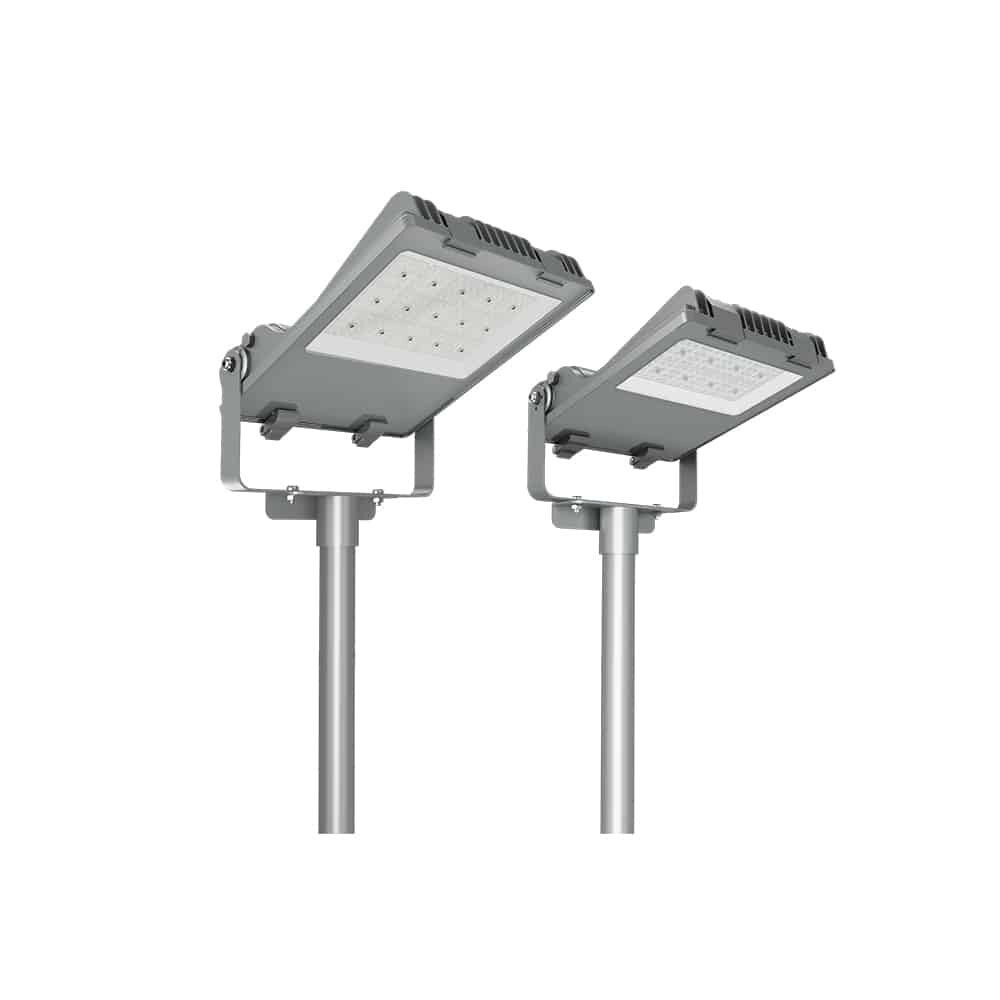
In conclusion, upgrading your lighting to LED is a smart and energy-efficient choice that can save you money in the long run. By converting a 2-ballast light to LED, you can enjoy brighter and clearer lighting while consuming less energy and reducing your carbon footprint. The process of converting to LED is relatively simple and can be easily done by following the steps outlined in this guide. Don’t hesitate to make the switch and start reaping the benefits of LED lighting today!


